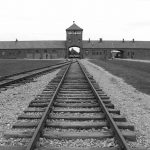Historical Overview of the Holocaust
This article examines the Holocaust’s causes, execution, and lasting impact on world history and human rights.
Imagine a time when the Nazis’ terrible vision helped plunge the world into humanity’s darkest chapter. The Holocaust, which refers to World War II atrocities, shows the dangers of unbridled hatred and discrimination. This article explores the genocide that changed human rights and global history, from systematic persecution to the harrowing existence in ghettos and the ominous shadow of concentration camps. Let’s explore the complicated circumstances and ideas that led to the Holocaust, providing light on those touched by Nazi Germany’s ruthlessness and the world’s response to an unprecedented moral tragedy.
The Holocaust: Exposing Nazi Germany’s Final Solution
Nazi Germany’s chillingly named Final Solution was Adolf Hitler’s long-term plan to solve the Jewish Question. This inconceivable antisemitic scheme planned to exterminate all European Jews. The Holocaust’s worst phase began with this heinous policy, which led to concentration and extermination camps. These camps, like Auschwitz, killed millions of Jews and other persecuted groups through mass killings, forced labor, starvation, and gas chambers.
International response to the Holocaust and concentration camp liberation highlighted the necessity for a global reckoning with Nazi Germany’s atrocities. After the Nazis were defeated, the Nuremberg Trials established international law by holding state-sponsored mass murderers accountable. The Holocaust also shaped human rights discourse, culminating to the Universal Declaration of Human Rights. The Holocaust’s survivors’ testimonies and historians’ and scholars’ meticulous documentation serve as a somber reminder of human cruelty and the importance of remembrance and education to prevent such atrocities.
From Persecution to Mass Murder: Evolution of German Anti-Semitism in the 1930s.
Nazi antisemitism was a planned rise from historical biases to state-sponsored genocide. Under Adolf Hitler, antisemitic emotions became laws and policies that stripped European Jews of their rights, properties, and lives. The Nuremberg Laws established Jewish persecution and segregation as legal precedent for their removal from society. A premeditated progression from prejudice to mass murder led to the Final Solution, a euphemism for the intentional elimination of Jews.
Reich antisemitism was defined by systematic dehumanization and extermination. To aid this transformation, the Nazis established ghettos, reviled Jews, and used concentration camps for forced labor and mass killings. The regime’s deportation of Jews from conquered territories to these camps showed its determination to exterminate Jews in Europe. This operation’s effectiveness and scale showed a shockingly methodical approach to state-sponsored persecution, underlining Nazi brutality and the need to comprehend this dark chapter in history to prevent its repetition.
Life in the Ghetto: Jewish Struggle Under Nazi Rule
Nazi ghettos in Poland and other European countries were not just places to house Jews, but also places of atrocity and persecution. In these cramped rooms, Jews experienced deprivation, congestion, sickness, and malnutrition while facing deportation to concentration camps and death facilities. The ghettos were a prelude to the Final Solution to the Jewish Question, which sought to exterminate six million European Jews. These locations were plagued by Nazi rule, and people and families struggled to survive.
The Nuremberg Laws: Legalizing Nazi Jew Persecution
The Nuremberg Laws, passed by Adolf Hitler’s dictatorship in 1935, legalized the systematic persecution of Jews in Nazi Germany. German Jews lost their rights and liberties when the Reich Citizenship Law and the Law for the Protection of German Blood and Honor legalized anti-Semitism. These racial laws banned Jews from German society based on lineage rather than religion, setting a terrible precedent for the future. The Nuremberg Laws marginalized Jews and contributed to the dehumanization that led to the Holocaust, showing how legal systems may justify oppression and brutality.
Allies and Collaborators: Nazi Germany’s Global Impact
The complex network of Allies and Collaborators who supported Nazi Germany under Adolf Hitler helped spread its terrible policies worldwide, intensifying the Holocaust’s global impact. Nations and political groupings across Europe and beyond supported the Nazi administration or were compelled into it, resulting in millions of deaths. This network of relationships was essential to implementing the Final Solution to the Jewish Question, a euphemism for the planned slaughter of European Jews, which included the creation of many concentration camps and ghettos in conquered regions, particularly Poland. Many countries and local administrations collaborated with Nazi Germany to transfer Jews, political opponents, and other marginalized populations to these execution camps. Collaborators show how Nazi ideology permeated many civilizations and political institutions, making the Holocaust’s impact more complex. It also emphasizes the significance of investigating these allies’ responsibilities in continuing the atrocities to understand the Holocaust’s destruction and the consequences of political complicity and ideological fanaticism.
Spread of Nazi Ideology Beyond Germany
After 1933, Nazi ideology spread beyond Germany when Adolf Hitler and the Nazi Party took power. The 1938 annexation of Austria and 1939 takeover of Poland began a relentless expansion that would embrace much of Europe under the Third Reich. Nazis tried to extend their racial purity and antisemitism across the continent, persecuting Jews and other oppressed populations. Operation Barbarossa, Hitler’s invasion of the Soviet Union in June 1941, showed his desire to expand the Reich’s dominance and achieve the Final Solution to the Jewish Question on a massive scale. Puppet regimes and supportive nations helped deport and murder millions, demonstrating Nazi Germany’s widespread impact.
The United States Holocaust Memorial Museum and the Holocaust Memorial Museum are vital in preserving the history of these tragic times, reminding us of the repercussions of permitting such ideas to spread. These organizations educate future generations by meticulously documenting the Holocaust, which killed six million European Jews, Roma, prisoners of war, and others the Nazis judged undesirable. They protect against denial and revisionism, ensuring that the world never forgets Nazi atrocities. This history is important as an homage to the victims and survivors and a reminder of the dangers of racism, intolerance, and dictatorship.
FAQs
What did Holocaust Memorial Museums do to preserve Holocaust history?
Holocaust Memorial Museums, especially the US Holocaust Memorial Museum, are vital to Holocaust history. The Nazi regime killed six million European Jews and millions of others, including Roma, Soviet prisoners of war, and disabled persons. These institutions document the slaughter for education, commemoration, and research. These museums memorialize Holocaust horrors and warn against racism, bigotry, and totalitarianism through their exhibitions, archives, and educational initiatives.
How did the Final Solution affect European Jews?
The Final Solution, Nazi Germany’s plan for the systematic murder of Jews, devastated European Jews. Hitler and his administration killed six million European Jews, two-thirds of Europe’s Jewish population, during the Final Solution. The Final Solution intended to exterminate Jews from Europe through ghettos, concentration camps, and extermination camps like Auschwitz-Birkenau, Treblinka, and Sobibor. Genocide devastated Jewish communities and left a lasting mark on survivors and humanity.
What role did the Nuremberg Laws play in Jewish persecution?
The Nazi Nuremberg Laws of 1935 were a turning point in German Jewish persecution. The Reich Citizenship Law and the Law for the Protection of German Blood and Honor legalized Jewish exclusion from German society. The Nuremberg Laws deprived Jews of their civil rights and set the stage for their systematic persecution by defining Jewishness by lineage and outlawing marriages and sexual interactions with non-Jewish Germans. These regulations were a major stage in the Nazi regime’s campaign against Jews, which led to the Final Solution and Holocaust.
How did Nazi Germany’s June 1941 invasion of the USSR effect the Holocaust?
Operation Barbarossa, the June 1941 Soviet invasion, greatly increased the Holocaust’s scale and cruelty. Hitler saw the war against the Soviet Union as a territorial conquest and a crusade against Jewish Bolshevism. Einsatzgruppen (mobile death units) shot Jewish men, women, and children after the invasion, signaling a turn toward systematic Jewish genocide. The invasion also gave the Nazis large Eastern European territory to pursue the Final Solution, resulting to more ghettos and execution camps. After this invasion, Nazi policies centered on Jewish genocide.
What happened to Jewish and non-Jewish Holocaust survivors when concentration camps were liberated?
The liberation of concentration camps by Allied forces in 1945 ended a nightmare for Jewish and non-Jewish Holocaust survivors. Liberation was only the start of a long and painful recovery and rebuilding process. After their homes were confiscated or destroyed, many survivors had nowhere to go. They suffered physical and psychological injuries from hunger and mistreatment, causing severe health issues. Holocaust survivors mourned their family and communities. Many survivors persevered to witness the Holocaust, founding memorials and museums and promoting Holocaust education and remembering. Their courage and testimony have helped the world remember the Holocaust.



